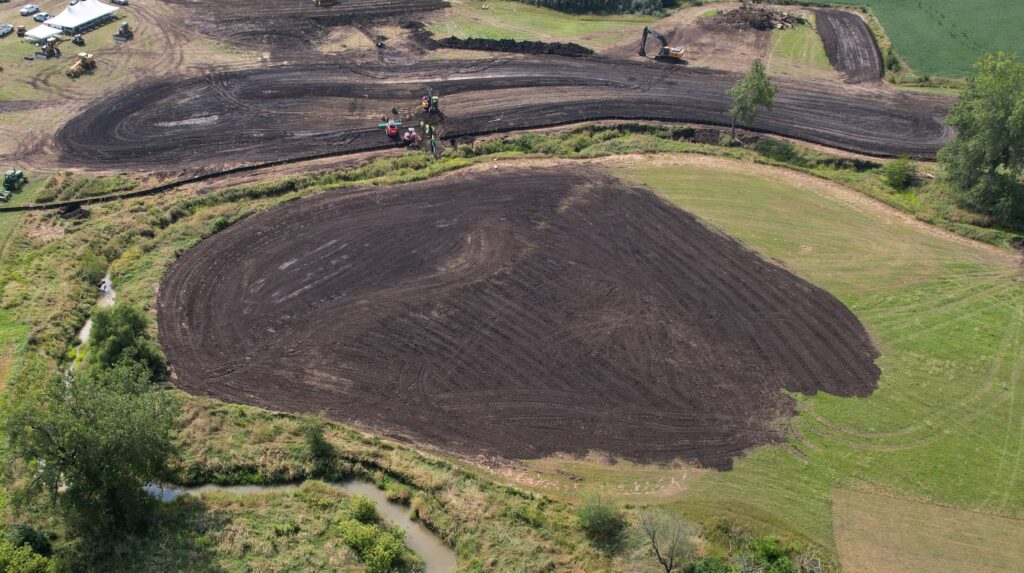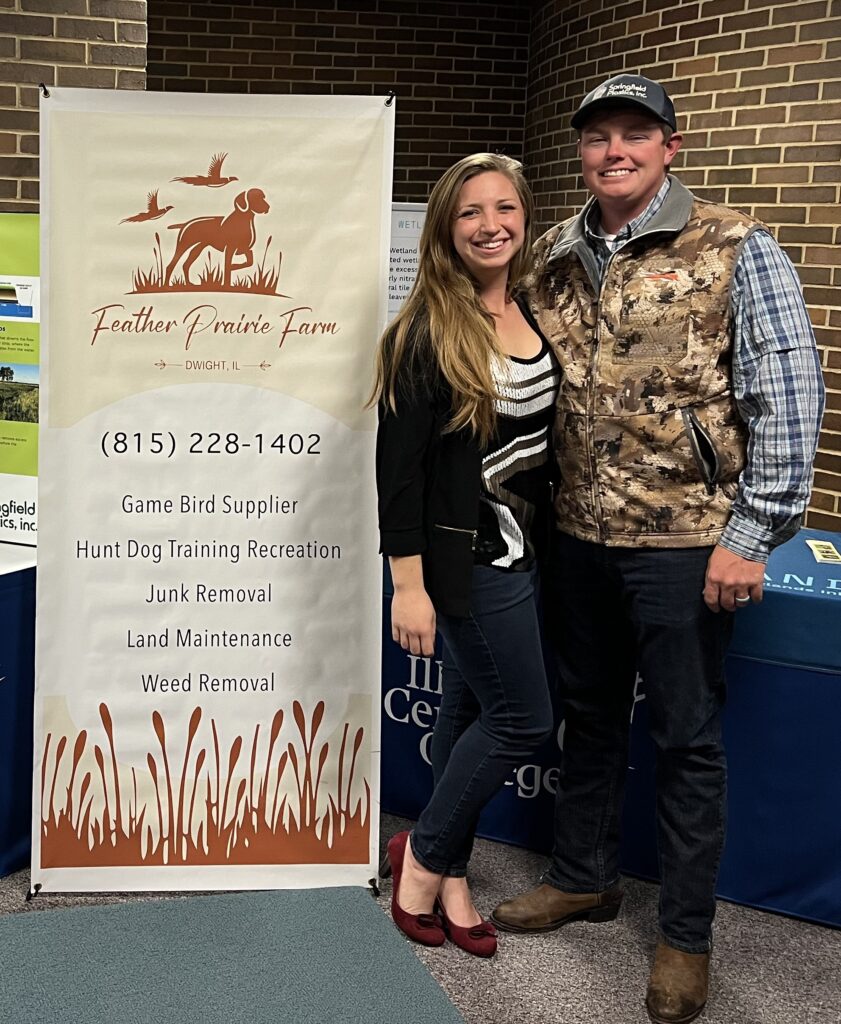There is no disputing that the Midwest farm landscape is one of the most productive in the world. This success is due in part to the extensive use of agriculture tile-drainage systems. However, when excess water is drawn from cropland, it often takes with it nutrients and other inputs needed for successful crop growth. That drainage water then pollutes the water bodies that receive it. Conservation drainage is one way to reduce that unintended problem. That is why the Illinois Sustainable Ag Partnership (ISAP) is offering an upcoming training on this issue.
Previously, ISAP offered a training on how conservation drainage practices –saturated buffers, bioreactors, controlled drainage, and constructed wetlands– can reduce pollution. We reached out to some of those trainees to learn how this training has been a benefit to them. One student was Wes Lehman, a conservation specialist and sales representative for Springfield Plastics, Inc. Wes his wife, Andie, also operate Feather Prairie Farm near Dwight, IL.

This photo shows the Feather Prairie Farm wetlands immediately after construction. The dark area shown in the foreground is an ephemeral wetland that is designed to collect and hold water to provide bird habitat. The oblong area across the creek is a constructed wetland that treats agriculture tile drainage water from two nearby fields. The construction crew is installing the outlet pipe moves the “cleaned” water from the wetland to the creek
Wes says that helping his customers was one of the reasons he took the class. “My goal was to get a good enough understanding of conservation drainage ideas to be able to help my farmer clients,” he said. “It is like being a doctor. We have to ask the right questions and examine the situation thoroughly in order give the right prescription.”

Andie and Wes Lehman promoting their farm.
“My world is consumed by agriculture and wildlife habitat. I have wetlands on my own property.” Wes says when he is not thinking about improving the quality of water on his family’s land, he is thinking about how to improve the wildlife habitat to attract a bigger variety of birds and mammals, but also create a that allows those populations to flourish.
Wes suggests ag professionals, landowners, and farmers consider taking this course because all of those working in agriculture should have a basic understanding of where the water flows within their property and away from it.
“Being in the agriculture community my entire life, I’ve realized that everyone wants the same thing. We all have a different understanding of what happens when a raindrop finally meets the surface. Broadening everyone’s education of conservation drainage and water quality is a great way to keep the peace in our society,” he said.
The program is designed for farmers, farmland owners, water managers, farm managers, and drainage contractors. To register for this half-day, free training session, use this registration form. The event runs from 8:00 AM to Noon on Wednesday, April 2, 2025, and includes lunch. It is part of the Conservation Drainage Network’s 2025 Annual Meeting, April 1-3, 2025, at Illini Union Hotel, 1401 West Green Street, Urbana, IL, 61801.